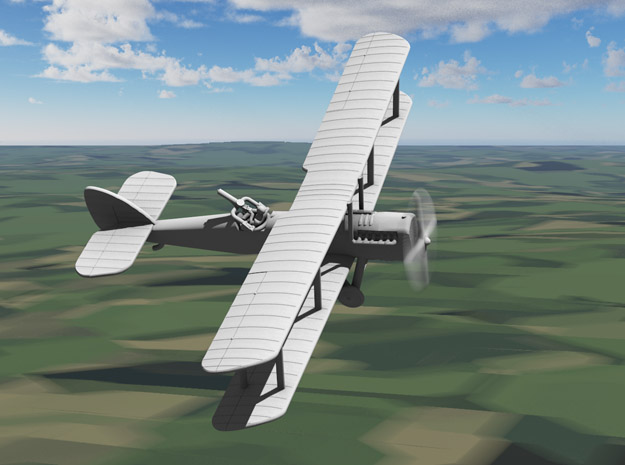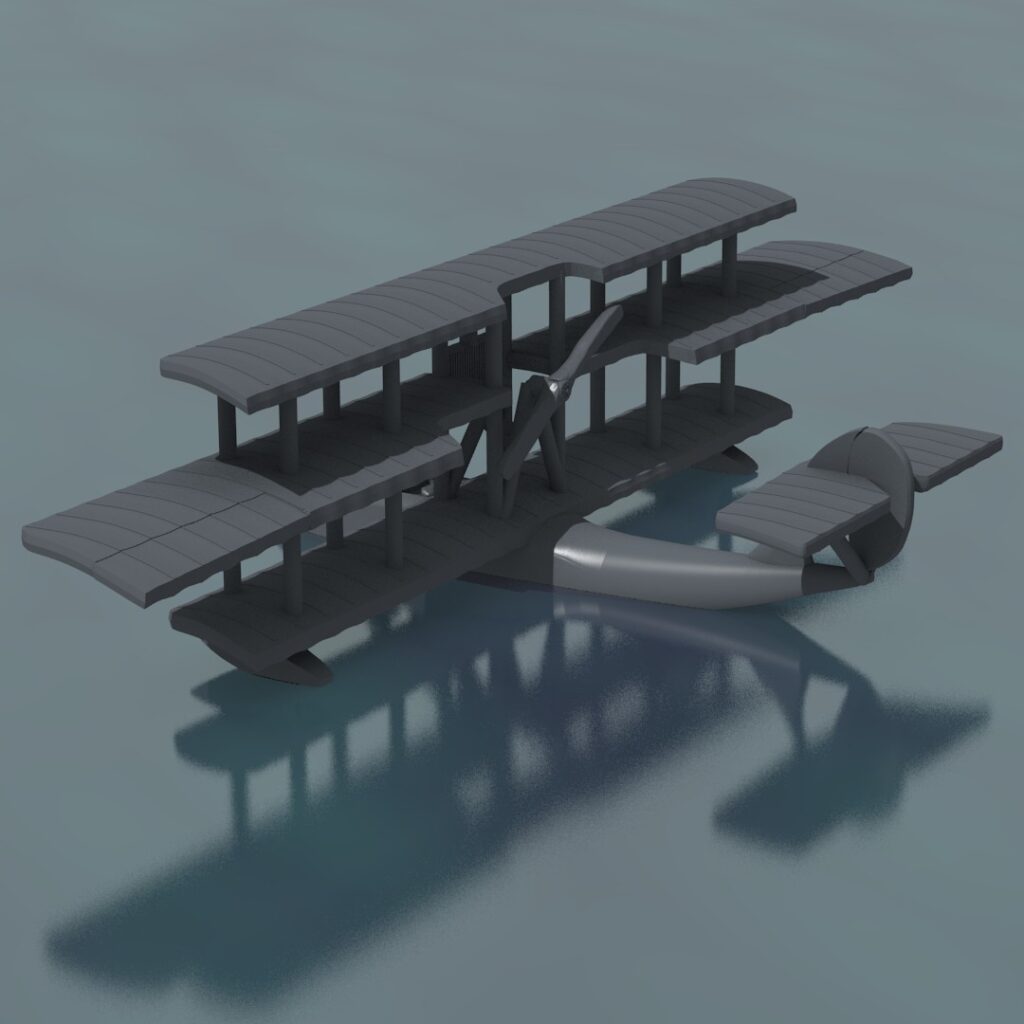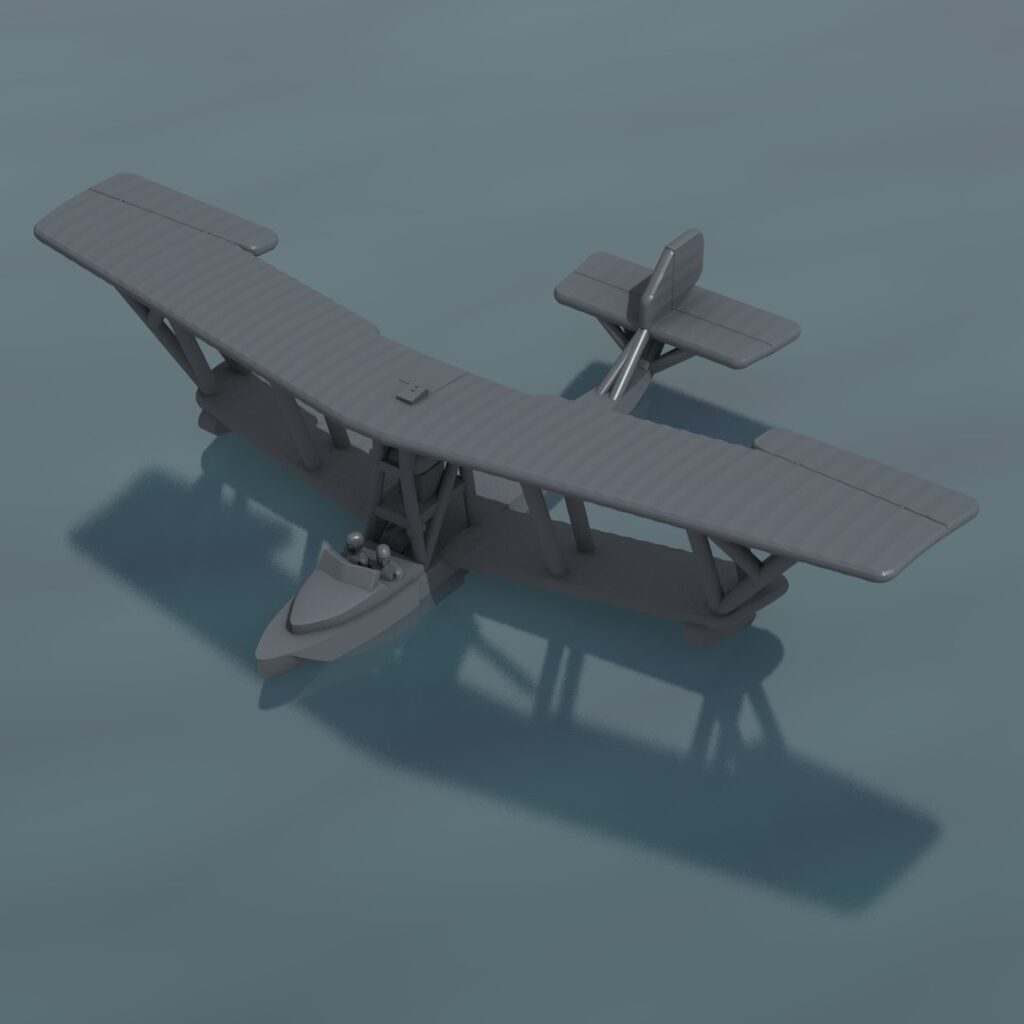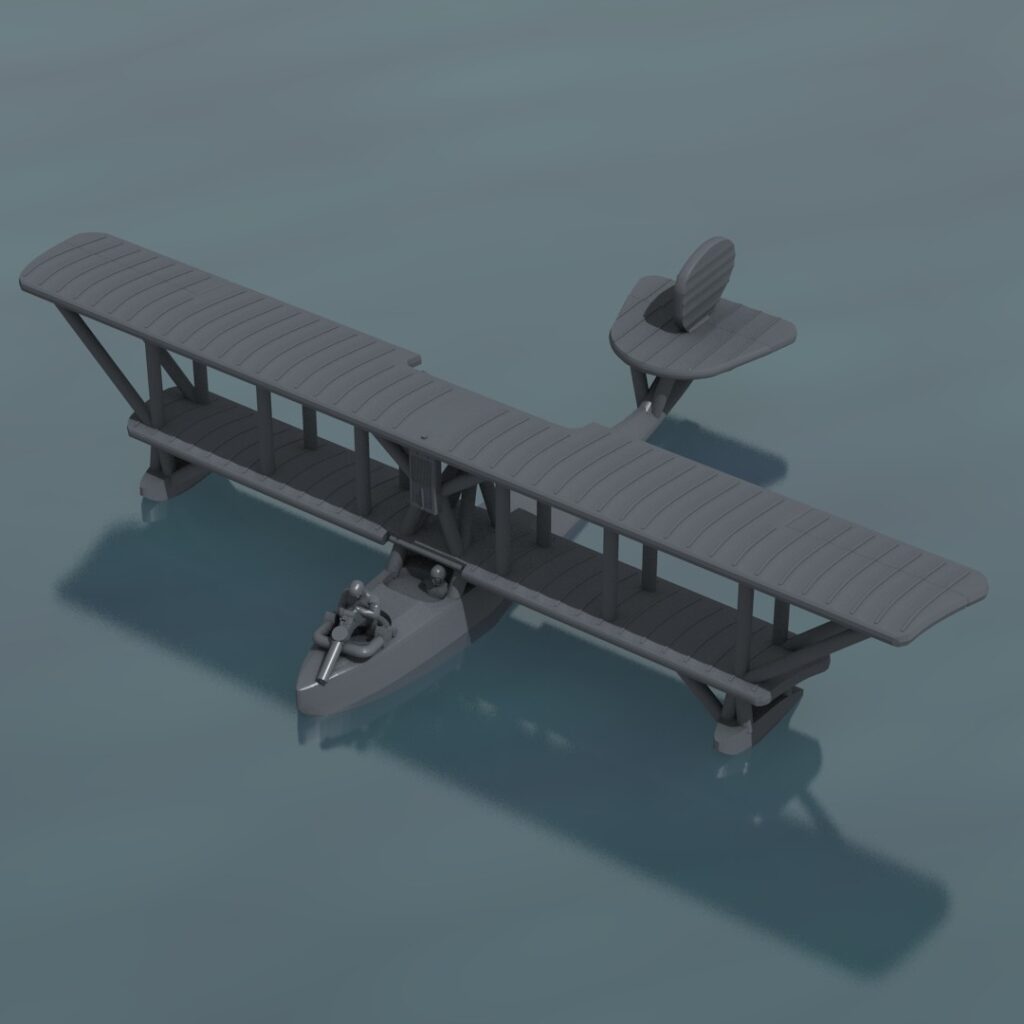The Airco D.H.4 was one of the great planes of World War One. Serving widely and in great numbers, its excellent Rolls-Royce engine gave it speed enough to outrun many enemy fighters, and power enough to overcome the drag lost through maneuvering. DH4s served from March 1917 through to the Armistice, performing bombing, observation, photography, anti-Zeppelin, and anti-submarine duties.
Overall, the D.H.4 was one of the great designs of World War One. It served on the Western Front, Italy, Aegean, Macedonia, Palestine, Mesopotamia, and during the Russian Revolution. An RNAS DH4 took down Zeppelin L.70 in August 1918. Belgium equipped six escadrilles with D.H.4s.
The D.H.4 also has the distinction of being the only fully American-built landplane to see action, serving with the U.S. Air Service starting in July 1918. American D.H.4s used twin Marlin/Browning synchronized machine guns, twin flexible Lewis guns, and the 400hp Liberty engine.
Three paintable Airco D.H.4s are now available from Great War Planes by Reduced Aircraft Factory: a standard version, and R.N.A.S. version with twin fixed Vickers, and a Liberty-engined American D.H.4.






